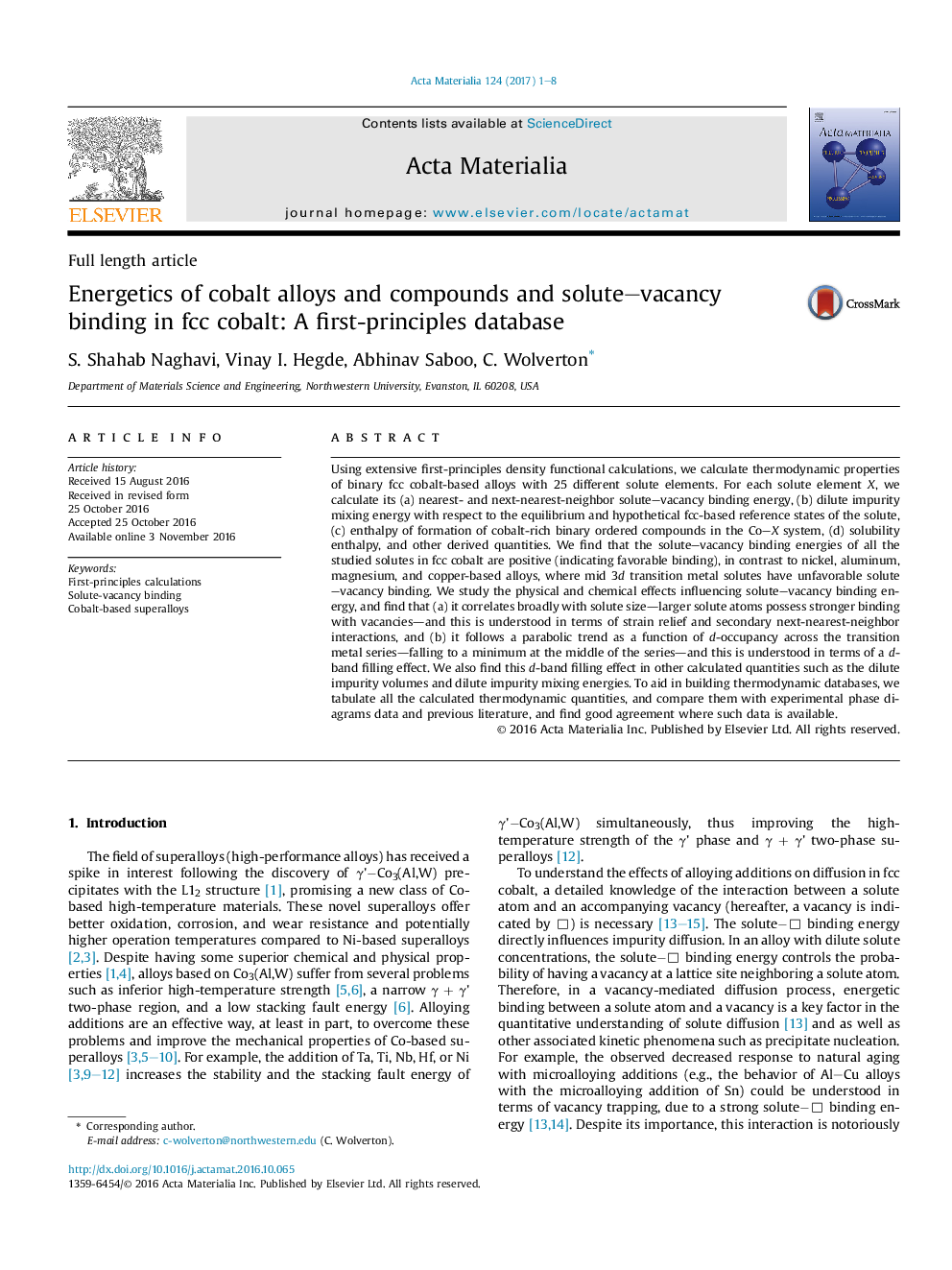| Article ID | Journal | Published Year | Pages | File Type |
|---|---|---|---|---|
| 5436420 | Acta Materialia | 2017 | 8 Pages |
Using extensive first-principles density functional calculations, we calculate thermodynamic properties of binary fcc cobalt-based alloys with 25 different solute elements. For each solute element X, we calculate its (a) nearest- and next-nearest-neighbor solute–vacancy binding energy, (b) dilute impurity mixing energy with respect to the equilibrium and hypothetical fcc-based reference states of the solute, (c) enthalpy of formation of cobalt-rich binary ordered compounds in the Co–X system, (d) solubility enthalpy, and other derived quantities. We find that the solute–vacancy binding energies of all the studied solutes in fcc cobalt are positive (indicating favorable binding), in contrast to nickel, aluminum, magnesium, and copper-based alloys, where mid 3d transition metal solutes have unfavorable solute–vacancy binding. We study the physical and chemical effects influencing solute–vacancy binding energy, and find that (a) it correlates broadly with solute size—larger solute atoms possess stronger binding with vacancies—and this is understood in terms of strain relief and secondary next-nearest-neighbor interactions, and (b) it follows a parabolic trend as a function of d-occupancy across the transition metal series—falling to a minimum at the middle of the series—and this is understood in terms of a d-band filling effect. We also find this d-band filling effect in other calculated quantities such as the dilute impurity volumes and dilute impurity mixing energies. To aid in building thermodynamic databases, we tabulate all the calculated thermodynamic quantities, and compare them with experimental phase diagrams data and previous literature, and find good agreement where such data is available.
Graphical abstractFigure optionsDownload full-size imageDownload high-quality image (192 K)Download as PowerPoint slide
